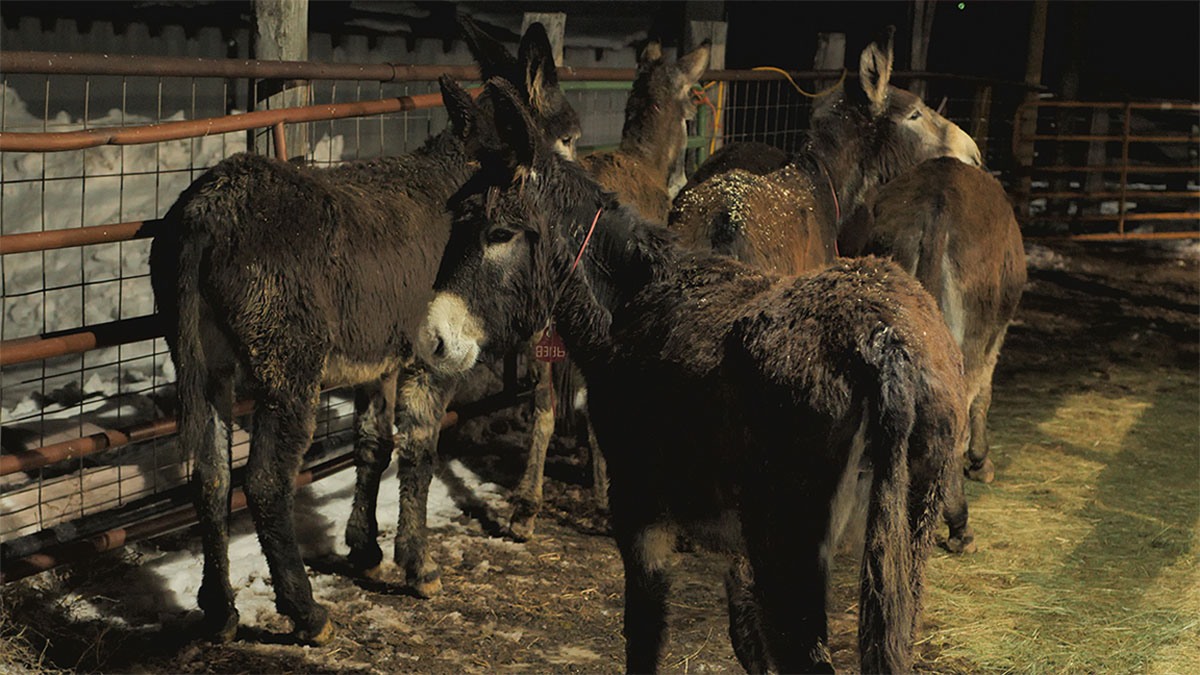Below is a news release from Colorado Parks and Wildlife
Colorado Parks and Wildlife is turning to a new ally in its efforts to help a Jackson County rancher protect his livestock from wolf depredation — wild burros.
Recently, CPW wildlife officers delivered six wild burros (two gelded jacks and four jennies) to rancher Don Gittleson in Walden in an attempt to decrease wolf depredations on his property. After becoming acclimated to the climate and altitude, the burros will be introduced to Gittleson’s herd of cattle.
“The idea is to make the burros become a part of the cattle herd to where they will start to protect or consider the cattle as a member of its family,” said CPW Wildlife Officer Zach Weaver, of Walden. “Don will start to introduce the burros to certain members of the herd in small increments.
“He has put the burros out with a small group of calves on his ranch. They’re still in a corral with access to heat, but he’s beginning to acclimate them … Don is monitoring the animals. He’s paying attention to how much they’re going inside to warm up. They’ll gain more hair as they need it.”
Gittleson experienced three depredation events due to wolves in December and January. After the last event, Gittleson and Weaver met with the Animal and Plant Health Inspection Service (APHIS) to discuss potential methods of preventing further depredation.
Weaver said they learned that in addition to approved hazing methods like fladry and noisemakers, there was some evidence that wild burros could help prevent wolf depredations.
“APHIS told us that burros were effective at stopping predation in Oregon,” Weaver said. “We learned that wild burros are more effective because they’ve been in the wild where they’ve had to defend themselves and their herd from predation from animals like mountain lions and coyotes.”
During the last week of January, Weaver located potential wild burros for adoption in Utah that had just come off the high country in Nevada. Weaver said this was an important factor.
“We didn’t want to bring an animal that had been at low elevation, say like southern California, where they had not been in negative temperatures or seen snow. Don and I wanted animals that had been at a higher elevation so they were acclimated and had developed hair for the cold. You’re talking 5,000 feet there as opposed to 8,000 at our lowest. We also wanted mature animals that had been on the landscape and would know how to defend themselves.”
On Feb. 27, Weaver and fellow CPW Wildlife Officer Josh Dilley drove to Axtell, Utah, and picked up six wild burros with ages ranging from 5 – 11 years old from the Axtell Wild Horse and Burro Facility.
Although it’s not a service CPW will be able to offer every rancher in Colorado, it could yield important information about how effective wild burros can be at preventing wolf depredations and Weaver said he’s been telling ranchers who reach out to him to look into the possibility of adopting burros.
“A lot of our monitoring will be based on feedback from Don for this pilot program,” Weaver said. “He’ll tell us if he’s seeing as many wolves as he has in the past, or if they’re still coming through his property at as high a frequency as they were.”
(Photo credit: Colorado Parks and Wildlife)
